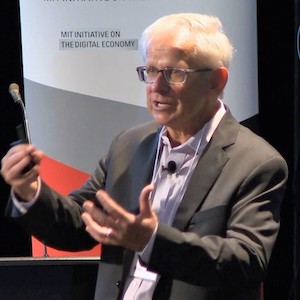transaction costs
See the following -
The (Awesome) Economics of Open Source
 Successful open source software companies "discover" markets where transaction costs far outweigh all other costs, outcompete the proprietary alternatives for all the good reasons that even the economic nay-sayers already concede (e.g., open source is simply a better development model to create and maintain higher-quality, more rapidly innovative software than the finite limits of proprietary software), and then-and this is the important bit-help clients achieve strategic objectives using open source as a platform for their own innovation. With open source, better/faster/cheaper by itself is available for the low, low price of zero dollars. As an open source company, we don't cry about that. Instead, we look at how open source might create a new inflection point that fundamentally changes the economics of existing markets or how it might create entirely new and more valuable markets.
Successful open source software companies "discover" markets where transaction costs far outweigh all other costs, outcompete the proprietary alternatives for all the good reasons that even the economic nay-sayers already concede (e.g., open source is simply a better development model to create and maintain higher-quality, more rapidly innovative software than the finite limits of proprietary software), and then-and this is the important bit-help clients achieve strategic objectives using open source as a platform for their own innovation. With open source, better/faster/cheaper by itself is available for the low, low price of zero dollars. As an open source company, we don't cry about that. Instead, we look at how open source might create a new inflection point that fundamentally changes the economics of existing markets or how it might create entirely new and more valuable markets.
- Login to post comments
Today's Patient Portals CAN NOT Work: Friction ACROSS Portals (Part 3)

Friction across multiple patient portals dramatically limits their usefulness—there’s no practical way for patients OR providers to reconcile and integrate information and workflow. This is the third post in our series on patient portals. We’ve used platform terminology and concepts to explain why today’s patient portals are doomed to mediocrity. Let’s recap: The first post in this series introduced the platform terminology of single-homing vs.multihoming. Patients strongly would prefer to have as few portals as possible — ideally one, i.e., a single “home”. The second post described the difference between stand-alone value and network value. Today’s patient portals can provide some stand-alone value, but they provide minimal network value. In this post we’ll discuss the pitfalls of friction across multiple portals. Your mom having seven portals is more than just inconvenient—it’s dangerous.
- Login to post comments